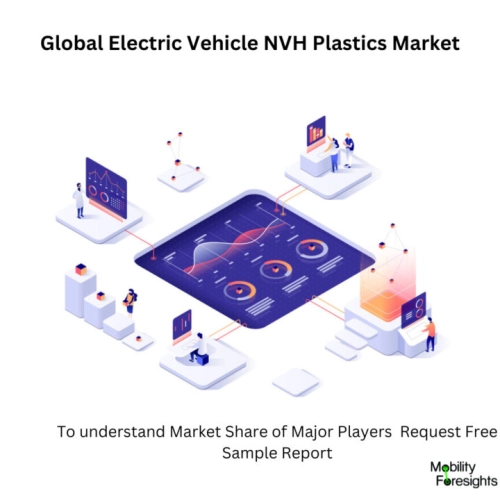
- Get in Touch with Us

Last Updated: Apr 25, 2025 | Study Period: 2023-2030
GlobalElectric Vehicle NVH PlasticsMarket
INTRODUCTION
The internal combustion engine featured in conventional cars is absent from electric vehicles. Although there are many reasons why this is a good change, there are also new NVH issues that come with it.
The engine of a standard car hides the typical loud and unwelcome behaviours of a car, while the silent motor of an electric car makes every sound and vibration more audible.
Engineers must enhance existing techniques or develop new ones to minimise or at least lessen NVH as an engine's vibration and noise generally cancel out some squeaks and rattles.
NVH engineers struggle with how to enhance NVH in their vehicles, whether it be by isolating a component or designing a special method to absorb vibration or noise energy.
Rubber is increasingly being used in NVH applications as the market for electric vehicles expands. Rubber is the perfect NVH material because of its adaptability, high density, and consistency.
Rubber materials, like EPDM, have a high density that makes them better at absorbing sound and vibration than plastics, and their consistency allows sound and vibration to be spread equally throughout the material.
Due to the higher standards for electric vehicles, NVH management is more difficult but, overall, more effective as a quiet, tranquil journey is now more feasible than ever.
GlobalElectric Vehicle NVH PlasticsMarket Size And Forecast

The Global Electric vehicle NVH plastics market accountedfor $XX Billion in 2021 and is anticipated to reach $XX Billion by 2030, registering a CAGR of XX% from 2022 to 2030.
RECENT DEVELOPMENT
The rising use of NVH materials in the production of goods for a variety of applications is a result of the rise in the consumption of polymers used to reduce noise, vibration, and roughness.
Utilizing NVH materials improves a product's mechanical and optical qualities while lowering NVH levels for more comfortable riding.
Comparing engineering resins to other commonly used commodity plastics like polystyrene, PVC, polypropylene, and polyethylene, engineering resins have superior mechanical strength and better thermal qualities.
Due to their high cost, these resins are only employed in small amounts when producing low-volume mechanical parts.
COMPANY PROFILE
THIS REPORT WILL ANSWER FOLLOWING QUESTIONS
| Sl no | Topic |
| 1 | Market Segmentation |
| 2 | Scope of the report |
| 3 | Abbreviations |
| 4 | Research Methodology |
| 5 | Executive Summary |
| 6 | Introduction |
| 7 | Insights from Industry stakeholders |
| 8 | Cost breakdown of Product by sub-components and average profit margin |
| 9 | Disruptive innovation in the Industry |
| 10 | Technology trends in the Industry |
| 11 | Consumer trends in the industry |
| 12 | Recent Production Milestones |
| 13 | Component Manufacturing in US, EU and China |
| 14 | COVID-19 impact on overall market |
| 15 | COVID-19 impact on Production of components |
| 16 | COVID-19 impact on Point of sale |
| 17 | Market Segmentation, Dynamics and Forecast by Geography, 2023-2030 |
| 18 | Market Segmentation, Dynamics and Forecast by Product Type, 2023-2030 |
| 19 | Market Segmentation, Dynamics and Forecast by Application, 2023-2030 |
| 20 | Market Segmentation, Dynamics and Forecast by End use, 2023-2030 |
| 21 | Product installation rate by OEM, 2023 |
| 22 | Incline/Decline in Average B-2-B selling price in past 5 years |
| 23 | Competition from substitute products |
| 24 | Gross margin and average profitability of suppliers |
| 25 | New product development in past 12 months |
| 26 | M&A in past 12 months |
| 27 | Growth strategy of leading players |
| 28 | Market share of vendors, 2023 |
| 29 | Company Profiles |
| 30 | Unmet needs and opportunity for new suppliers |
| 31 | Conclusion |
| 32 | Appendix |